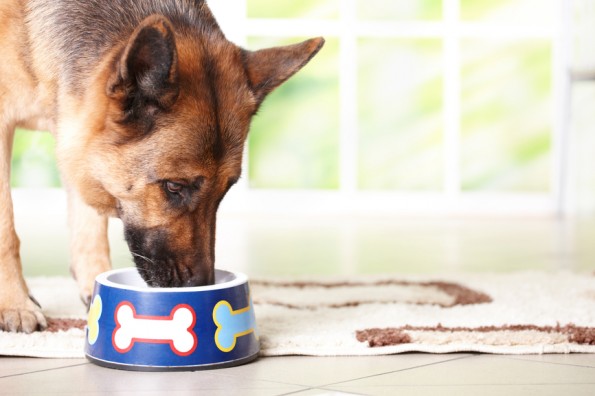Choosing an appropriate diet for your pet can be a challenge; walk into any pet store or vet clinic and you will see an array of diets all offering different choices. Not only are we faced with the decision between chicken or beef, raw or cooked, grain free, organic, free range or any other specialized diet, we now have a selection of kibble size and shape to sift through. Is there really any difference between kibbles? Or, are certain kibbles made for certain pets? There is in fact a sort of science behind the size and shape of kibble.
Not all foods are appropriate for every pet; the same is true for kibbles. Some kibbles are designed to be chewed more than others, some are harder or softer, specially shaped to be picked up easier, designed to control consumption speed, or created highly dense to aid in a weight loss program. Age and breed are both taken into consideration when a diet is created, but more specifically large breed dog requirements and small breed dog requirements.
Large breed dogs require a different dietary formula then that of small breed dogs. This means that they typically should not eat from the same bag of food. How do you know if a bag of food is appropriate for a large or small breed dog? Well luckily, Royal Canin has introduced a line of veterinary exclusive diets especially formulated for small dogs.
The new line of food has highlighted three ways in which small breed dogs differ from large breed dogs, and have focused on these differences in what the diets offer. Firstly, kibble size. Small breed dogs have smaller mouths and weaker jaws, therefore the kibbles have been designed with a specific size, density, shape and texture. Oral health differs between large and small breeds; smaller breeds are more prone to dental diseases, specifically tartar. To battle this, all of the small dog diets contain tartar reducing ingredients to help prevent build up. Lastly, small breed dogs produce more concentrated urine and are therefore more likely to develop bladder stones. The new line of small breed diets has been formulated with their unique urinary health requirements in mind. The S/O index reduces the risk of struvite and calcium oxalate crystal and stone formation.
So as you can see, size really does matter. Buying the appropriate diet for your pet can not only make their meal time more enjoyable, it can yield huge benefits to their health and overall well being.

